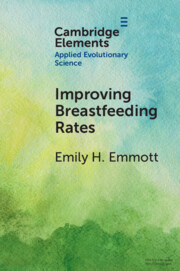Element contents
Improving Breastfeeding Rates
Published online by Cambridge University Press: 10 February 2023
Summary
- Type
- Element
- Information
- Online ISBN: 9781009217491Publisher: Cambridge University PressPrint publication: 23 February 2023
References
- 10
- Cited by



